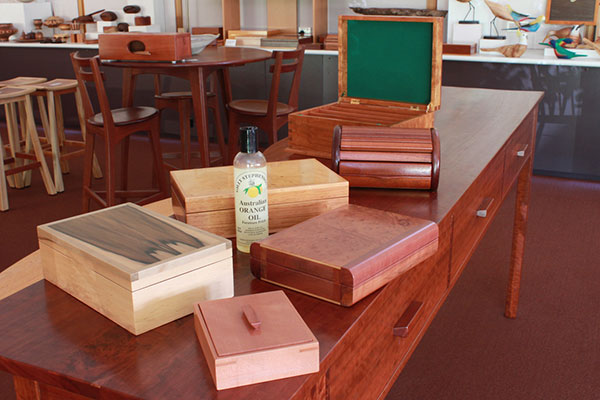How to Look After Your Handcrafted Box
We have many types of boxes in our range, made by different craftsmen, each with their own approach to design, style and finish. After a box has been made the timber will always need to be finished in some way to protect and enhance the timber. In the same way that wetting a stone will bring out its colour, a piece of sanded timber will spring to life with the application of oil or wax or one of the many finishes around which simultaneously seal and protect the wood. Our different boxmakers have their own preferences and even their own recipes for the finishes they use on their work which require different care. If you are the proud owner of a box from our range be it a little trinket/ring box or serious full on jewellery box; a card box, document box or general purpose box, we can advise which products are the best to use and surprisingly it comes down to a very few.
One Important Golden Rule
Don’t use any silicone containing product on any of the boxes (a popular spray on can with a little smiling man on it is one) and this is the unanimous opinion of every boxmaker. These will cause silicone build up over time which will eventually become cloudy and is virtually impossible to remove.

The Oil Finished Boxes
These include the Dovetail jewellery boxes and the Alan Williams compartment boxes, both makers favouring a simple oiled finish that puts nothing between you and the timber. You can feel the silky warmth of the timber with your fingertips with this type of traditional, pure, respect the timber approach. The Garrick document box is included here because although it has a slightly different finish to the other two (oil and wax) it also is one of the wax gang. To best look after these boxes use a good quality furniture wax that is based on beeswax or canuba wax, not silicone. A light dusting and a whiff of wax every now and then is all they will need to keep the timber nourished and sofly glowing. Do not be tempted to use furniture oil on these pieces as it will darken the timber with each application.

The Hard Wearing Polyurethane Finish
As seen on The Deloraine range of boxes by Harry Schrepfer, The Taree boxes by Pat Croker, The Tamar range and the Roll-Top boxes by Gez Norman require the least attention of all. Polyurethane is a modern, hard-wearing finish that completely seals the timber with a durable glossy coat that needs only a wipe over with a slightly damp cloth and a buff to keep it looking good and to remove fingerprints. If it is your own box why not use the old soft exhale to mist the surface and then buff with a soft cloth. If the fingerprints look stubborn then a hint of orange oil on a cloth should do the trick. Orange oil, unlike heavier furniture oils is a wonderful product that is non toxic, will not affect oiled or waxed finishes and can be used on almost any timber finish including the polyurethanes.
The Garrick Blue Document Box (see first photo)
Garrick finishes his boxes with an oil then wax finish and recommends using a good quality furniture wax, non silicone of course, or a good quality furniture oil. He uses orange oil on his boxes so this again is a perfect cleaning agent. If you want more of a high shine then choose a canuba wax polish after cleaning.

The Trinket and Ring Boxes
The pretty little trinket and ring boxes by John Tudehope are finished with the hard drying oil that is used on rifle butts. This is basically a traditional,boiled linseed oil mixture with various varnishes added to it to give a very durable yet natural, understated gloss. John is another orange oil fan and says that it smells nice and is a good cleaning agent while leaving very little residue which can be buffed off.
A final word from Harry Schrepfer on box care, quoted here in this short clip:






